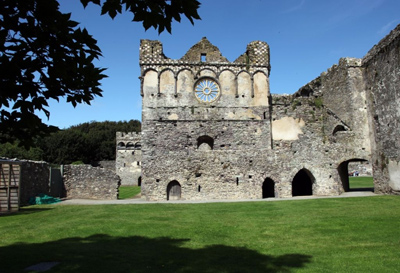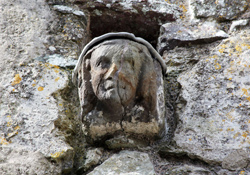 |
A 15-YEAR CONSERVATION project at the Bishop’s Palace at St Davids, in south-west Wales, has won a prestigious European award.
 |
A 15-YEAR PROJECT at The Bishop’s Palace St Davids, Pembrokeshire in south-west Wales has won a prestigious award for conservation from Europa Nostra, the Pan-European Federation of Cultural Heritage. The palace has been
beautifully and imaginatively restored by Cadw, the Welsh Assembly
Government’s historic environment service, according to the Europe
Nostra judges. The project now goes on with 29 from across Europe for one of six ‘Grand Prix’ awards which will be announced in Istanbul, Turkey on 10 June as 2010’s outstanding examples of heritage protection. St Martin in the Fields, London, is the only other UK project competing alongside St Davids Bishop’s Palace in the Conservation category.
 |
St Davids was the most important diocese in Wales and the cathedral housed the relics of the 6th-century saint, David – now the patron saint of Wales. A succession of important visitors came here on pilgrimage between the 11th and 13th centuries – the diocese became so important that a papal privilege granted that two pilgrimages to St Davids were equal to one to Rome. From 1328 to 1347, Henry de Gower was Bishop of St David’s and created a new palace in style of Gothic architecture known as Decorated, with lavish application of ornament, including fine carving and decorative stonework. It’s is the most complete secular building in Decorated style surviving in England and Wales. The palace was given intricate stone carvings, brightly coloured stonework and architectural detailing in the form of an arcaded parapet. What is remarkable is that Bishop de Gower had little private wealth and an income considerably less than that available to most other bishops, so had to build the palace on a tight budget. He choose local materials which include the fortunately very beautiful purple Caerbwdi sandstone. It began to fall into disrepair in the late Middle Ages: the bishop retreated into rooms in the east range and the great hall became unroofed. It was last used by a bishop in the mid 17th century, then during the 18th and 19th centuries the site, including the upper floors of the main building, became a market garden and squatters lived in the undercrofts. In 1932, the church authorities placed the ruins of the palace in the care of the state.
Open: year round. Further information on this and other historic properties in Wales under the care of CADW, go to www.cadw.wales.gov.uk





 © 2024
© 2024